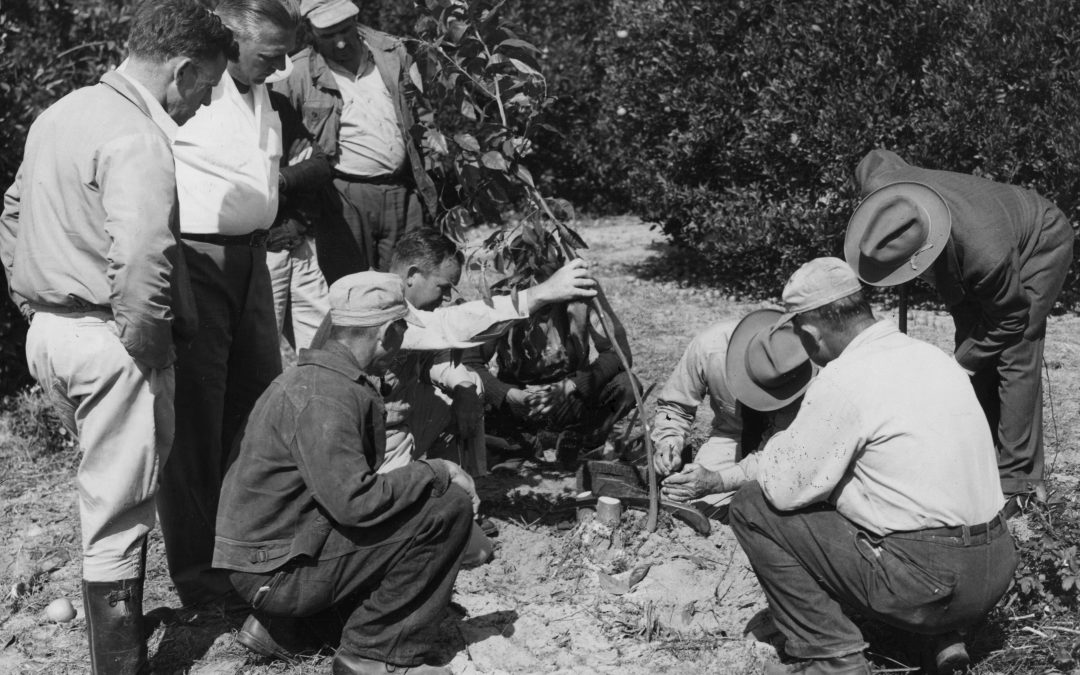
by Matt Lollar | Feb 18, 2021
It’s mid-February, cloudy, and cold. It’s time to get outside and take cuttings for fruit and nut tree grafting. The cuttings that are grafted onto other trees are called scions. The trees or saplings that the scions are grafted to are called rootstocks. Grafting should be done when plants start to show signs of new growth, but for best results, scion wood should be cut in February and early March.
Scion Selection
Straight and smooth wood with the diameter of a pencil should be selected for scions. Water sprouts that grow upright in the center of trees work well for scion wood. Scions should be cut to 12-18″ for storage. They should only need two to three buds each.
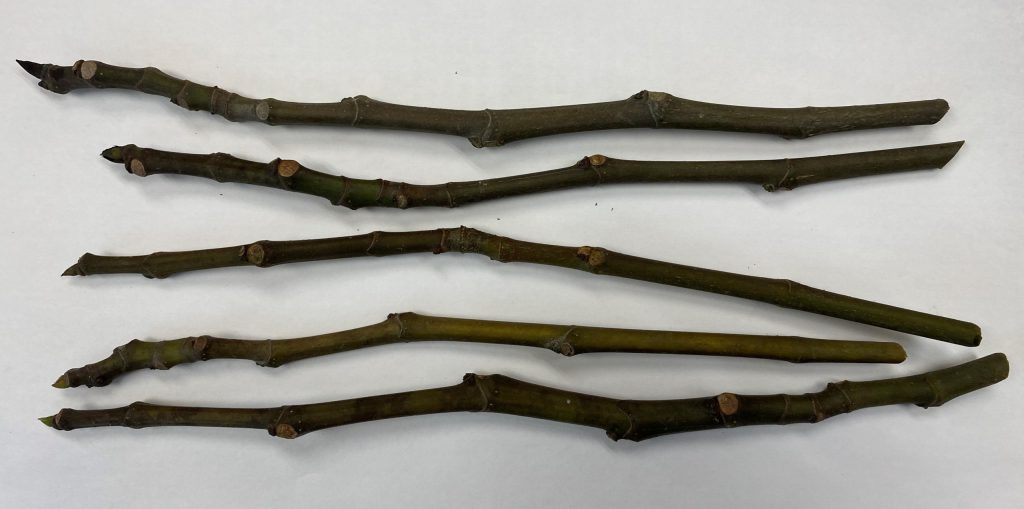
Scions ready for grafting. Photo Credit: Matt Lollar, University of Florida/IFAS Extension – Santa Rosa County
Scion Storage
Scions should be cut during the dormant season and refrigerated at 35-40°F until the time of grafting. If cuttings are taken in the field or far from home, then simply place them in a cooler with an ice pack until they can be refrigerated. Cuttings should be placed in a produce or zip top bag along with some damp paper towels or sphagnum moss.
Grafting
It is better to be late than early when it comes to grafting. Some years it’s still cold on Easter Sunday. Generally, mid-March to early April is a good time to graft in North Florida. Whip and tongue or bench grafting are most commonly used for fruit and nut trees. This type of graft is accomplished by cutting a diagonal cut across both the scion and the rootstock, followed by a vertical cut parallel to the grain of the wood. For more information on this type of graft please visit the Grafting Fruit Trees in the Home Orchard from the University of New Hampshire Extension.
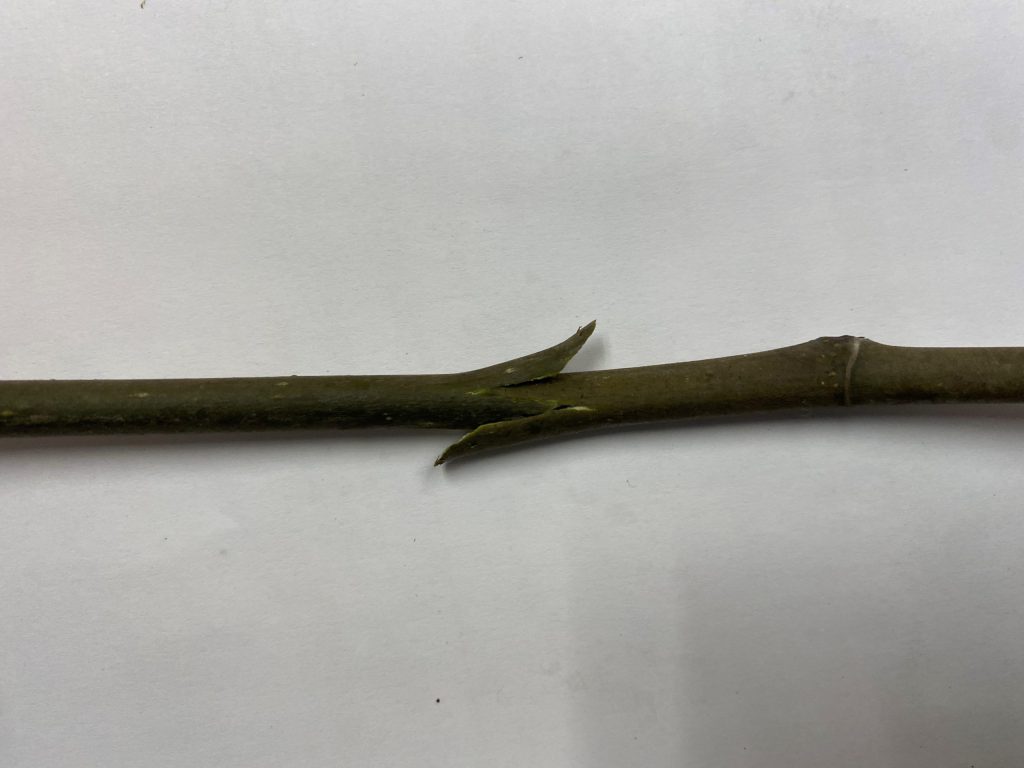
A bench graft union. Photo Credit: Matt Lollar, University of Florida/IFAS Extension – Santa Rosa County
Achieving good bench graft unions takes skill and some practice. Some people have better success using a four-flap or banana graft technique. This type of graft is accomplished by stripping most of the bark and cambium layer from a 1.5″ section of the base of the scion and by folding the back and removing a 1.5″ section of wood from the top of the rootstock. A guide to this type of graft can be found on the Texas A&M factsheet “The Four-Flap Graft”.
Grafting is a gardening skill that can add a lot of diversity to a garden. With a little practice, patience, and knowledge any gardener can have success with grafting.
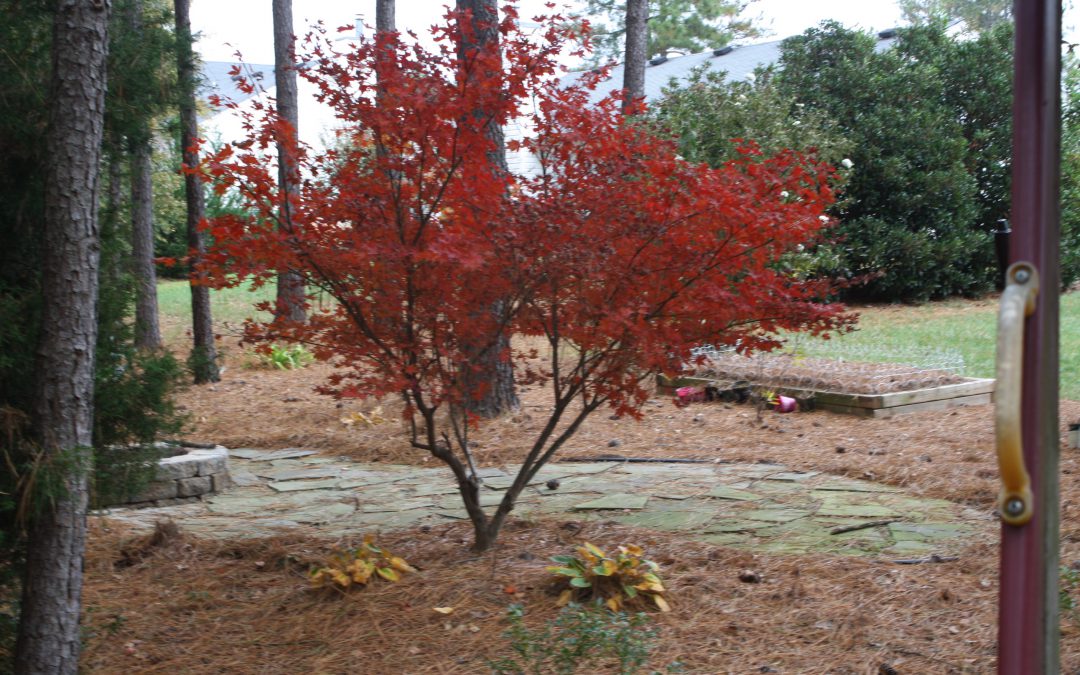
by Julie McConnell | Dec 4, 2020
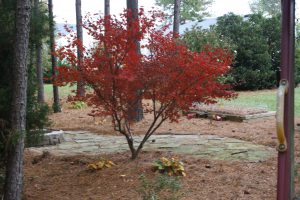
Intense red fall color of Japanese Maple in Georgia is hard to replicate in our climate. J_McConnell, UF/IFAS
Fall is a favorite time of year for many people. Cool nights, short days, football games and the fast approaching holidays are all signs of summer coming to an end. Floridians who have relocated from other parts of the country may be disappointed to realize we get very little showy fall color even though we can grow some of the same trees in North Florida as other parts of the country. Why is that? Well, although plant breeders may promise “showy fall color” in certain selections, they really can’t promise that year after year because it’s more than just genetics influencing leaf color. Let’s take a deeper dive into the science behind fall color!
Why do the leaves change color?
Lower temperatures and shorter day length indicate to plants that winter is approaching and some physiological changes start to occur. Chlorophyll is a pigment found in leaves that, in addition to capturing sunlight and producing energy, also causes plants to display green during the growing season. As fall approaches, environmental changes tell plants to stop producing chlorophyll and existing pigment begins to break down. The reduction of chlorophyll allows the other pigments present (carotenoids and anthocyanin) to reveal their colors in an array of yellows, browns, oranges, reds, and purples. Different plants have different levels of these pigments and some may not exist at all in certain species. This explains why some plants typically turn only yellow and others may show yellow, orange, and/or red!
Why is there so much difference from year to year?
Variation occurs because environmental conditions and cultural practices play a part in determining how much color will be on display. Rainfall or irrigation amounts in the preceding summer and fall, drought cycles, nutrient levels, sunlight, and day and night temperatures all influence color from year to year.
How do I increase the potential for showy fall color in my landscape?
Choose plants with the reputation of producing desired fall colors in our area. However, keep in mind that because of the influence of outside conditions, you may be in for a surprise from year to year. To increase your chance of having a somewhat predictable fall display, use cultivars instead of seedlings of a plant species. A cultivar is a selection of a plant species that has been chosen for desirable traits, like growth habit, flowering, or fall color. These attributes are usually easily identified by the way their names are assigned. For example, Acer rubrum ‘October Glory’ is a red maple cultivar known for a full rounded canopy and exceptional red fall color. The reason that cultivars appear more consistent is because they are genetic copies of the parent plant that they are named for. A species or seedling plant is not a clone but comes from seed, which means you will get as much genetic variation as you see in human siblings. Just like children in our own families, each will each shine in their own way and no two will be exactly alike.
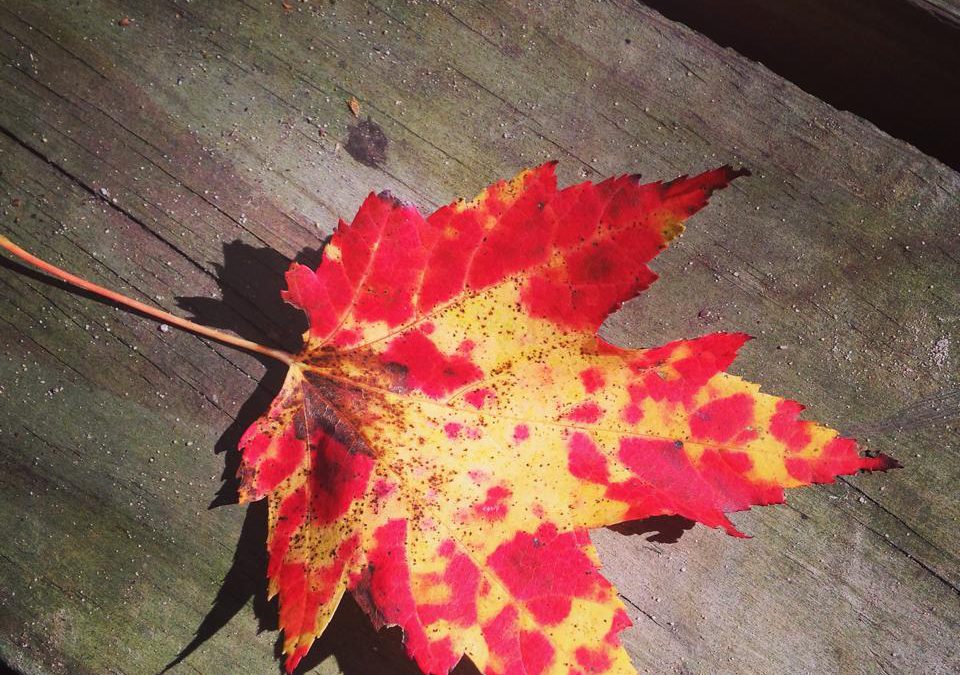
by Carrie Stevenson | Nov 18, 2020
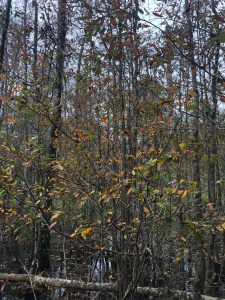
The blackgum/tupelo tree begins changing leaf color in early fall. Photo credit: Carrie Stevenson, UF IFAS Extension
Florida isn’t necessarily known for its vibrant fall foliage, but if you know where to look this time of year, you can find some amazing scenery. In late fall, the river swamps can yield beautiful fall leaf color. The shades are unique to species, too, so if you like learning to identify trees this is one of the best times of the year for it. Many of our riparian (river floodplain) areas are dominated by a handful of tree species that thrive in the moist soil of wetlands. Along freshwater creeks and rivers, these tend to be bald cypress, blackgum/tupelo, and red maple. Sweet bay magnolia (Magnolia virginiana) is also common, but its leaves stay green, with a silver-gray underside visible in the wind.
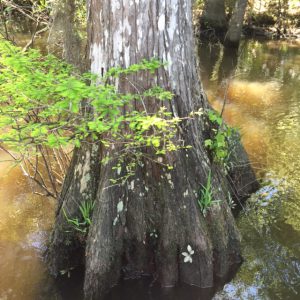
The classic “swamp tree” shape of a cypress tree is due to its buttressed trunk, an adaptation to living in wet soils. Photo credit: Carrie Stevenson, UF IFAS Extension
Bald cypress (Taxodium distichum) is one of the rare conifers that loses its leaves. In the fall, cypress tress will turn a bright rust color, dropping all their needles and leaving a skeletal, upright trunk. Blackgum/tupelo (Nyssa sylvatica) trees have nondescript, almost oval shaped leaves that will turn yellow, orange, red, and even deep purple, then slowly drop to the swamp floor. Blackgums and cypress trees share a characteristic adaptation to living in and near the water—wide, buttressed trunks. This classic “swamp” shape is a way for the trees to stabilize in the mucky, wet soil and moving water. Cypresses have the additional root support of “knees,” structures that grow from the roots and above the water to pull in oxygen and provide even more support.
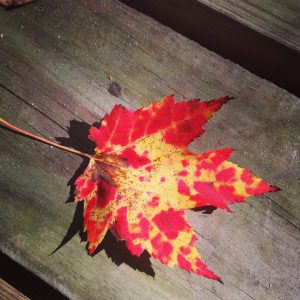
A red maple leaf displaying its incredible fall colors. Photo credit: Carrie Stevenson, UF IFAS Extension
The queen of native Florida fall foliage, however, is the red maple (Acer rubrum) . Recognizable by its palm-shaped leaves and bright red stem in the growing season, its fall color is remarkable. A blazing bright red, sometimes fading to pink, orange, or streaked yellow, these trees can jump out of the landscape from miles away. A common tree throughout the Appalachian mount range, it thrives in the wetter soils of Florida swamps.
To see these colors, there are numerous beautiful hiking, paddling, and camping locations nearby, particularly throughout Blackwater State Forest and the recreation areas of Eglin Air Force Base. But even if you’re not a hiker, the next time you drive across a bridge spanning a local creek or river, look downstream. I guarantee you’ll be able to see these three tree species in all their fall glory.
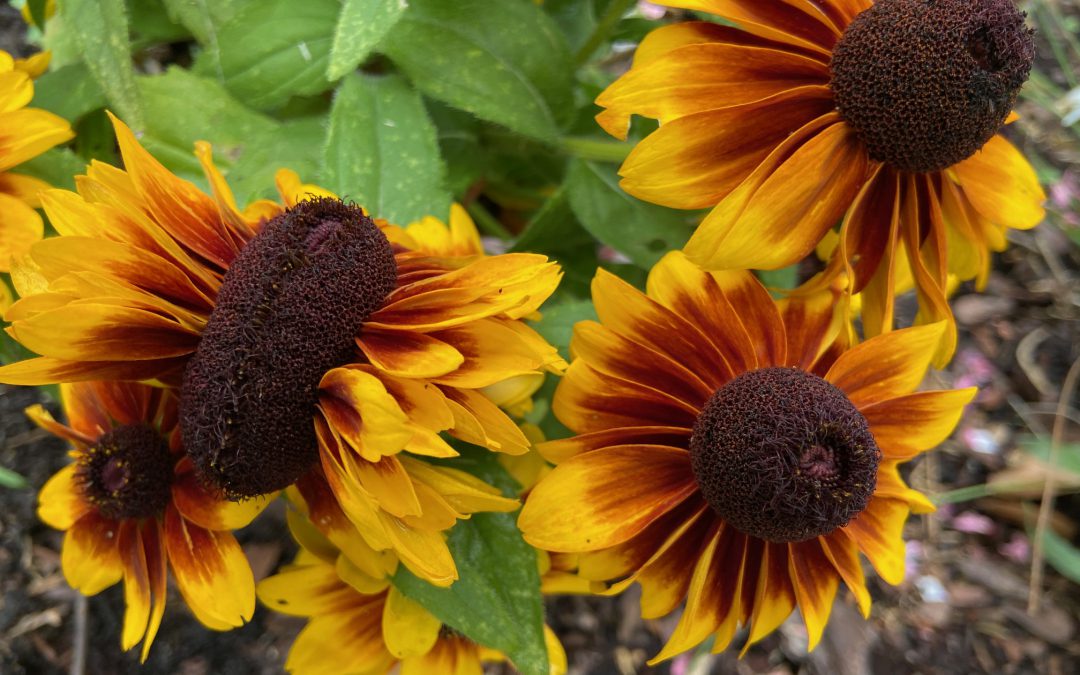
by Mary Salinas | Jul 16, 2020
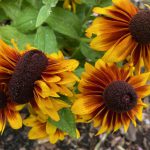
Fasciation of Rudbeckia hirta ‘Toto Rustic’. Photo credit: Mary Salinas, UF IFAS Extension.
You never know what surprises are looming in your flower gardens.
This Rudbeckia in the photo to the left sported one bloom that was so different from all the others. The disk or central portion of the inflorescence was elongated and curved back on itself and created a contorted, crazy looking bloom. And then there was a yellow squash in my garden that had a leaf growing down the length of the squash. What caused these things to happen?
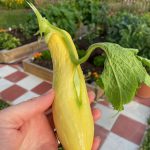
Fasciation in yellow summer squash. Photo credit: Mary Salinas, UF IFAS Extension.
This is a mutation, often genetic, but also could be caused by outside influences such as pathogens, injuries, or chemicals. Plant hormones may also play a role in this phenomenon. This mutation expresses itself as a malformation or cresting at the tip or growing point of the plant, also known as the meristem. We call this fasciation and it begins when the cells at a growing point of a plant start dividing in an uneven or asymmetrical fashion instead of the normal symmetrical pattern.
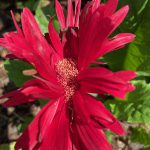
A gerbera daisy affected by fasciation. Photo credit: Mary Salinas, UF IFAS Extension.
There are some plants we embrace for their fasciation. A common one is cockscomb celosia that is prized for its showy crested inflorescence. Cacti and succulents more commonly exhibit fasciation and we can see it in some of the crested cacti.
Take a close look at what is happening in your garden and landscape. Plant biology is fascinating!
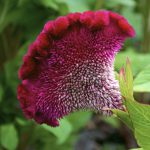
Cockscomb Celosia inflorescence. Photo credit: Lee Terilla 2008, some rights reserved.
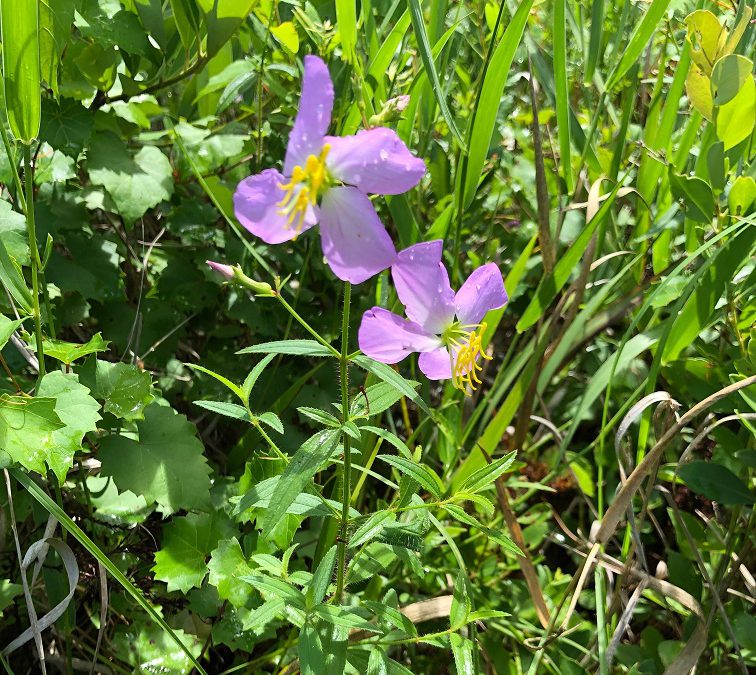
by Stephen Greer | Jul 16, 2020
By: Stephen Greer, CED Santa Rosa County
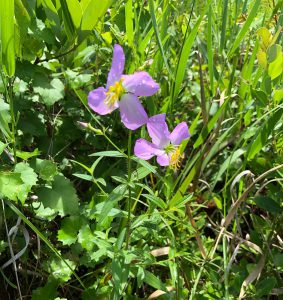
Rhexia marianna Photo credit: Stephen Greer, University of Florid IFAS
There is a lot to be said about early morning or late afternoon walks along a woodland trail in Northwest Florida. With so much to see, hear and smell there is never enough time to take it all in. I would suggest slowing down and look for the many colorful and interesting plants these native plant communities have to offer.
I had the great fortune to meet with a group of plant explores lead by Angus Gholson, botanist and conservationist with a passion to share his knowledge in Washington County many years ago for a 5-hour hiking adventure. We hiked an exceptional longleaf pine forest with immense flora on the forest floor. It was all but impossible to see everything.
We searched for unique and common plants in the Sandhills and Clayhills in the central and northern areas of Washington County. Here are just a few of the plants we saw along our hike and some detail about them.
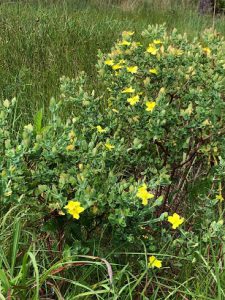
St. Peter’s-wort. Photo create: Stephen Greer University of Florida IFAS
St. Peter’s-wort, Hypericum tetapetalum is a wonderful Hypericum of the many we have in NW Florida. With its ability to repeat bloom petite yellow flowers from March to November, we often get the chance to revisit these trails at a later date for another chance to enjoy them. Like many repeat blooming natives, there will be weeks of rest periods with no bloom. This shrub will grow to three feet tall allowing the flowers to peak out over other plants in the pine flatwoods.
Shiny Lyonia, Lyonia lucida is another exceptional shrub with many uses. This evergreen can grow in low damp areas or with irrigation in landscapes to 10 to 12 feet tall. When found in pine forest areas they range from 3 – 6 feet tall. This Lyonia produces an attractive small bell-shaped red flower spread across a stem of last years growth similar to blueberry. Flowering can occur between November and June.
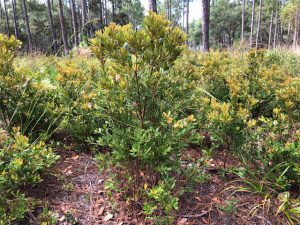
Lyonia lucida. Photo credit: Stephen Greer, University of Florid IFAS
Pale Meadow Beauty, Rhexia Marianna brings a soft pink bloom to the pine forest, grass prairies and edge of full sun to part-shade wetlands. With the ability to grow in diverse landscapes in Northwest Florida it can just about show up anywhere, bloom a few weeks and melt back into the natural setting. Seeding is best completed in the fall and consistent moisture is needed for bloom to occur.
All three of the plants in this article can be found at native plant nurseries. Call the nursery well ahead of time to make sure they either have it or can order it for you. Enjoy the outdoors and adventure it has to offer.
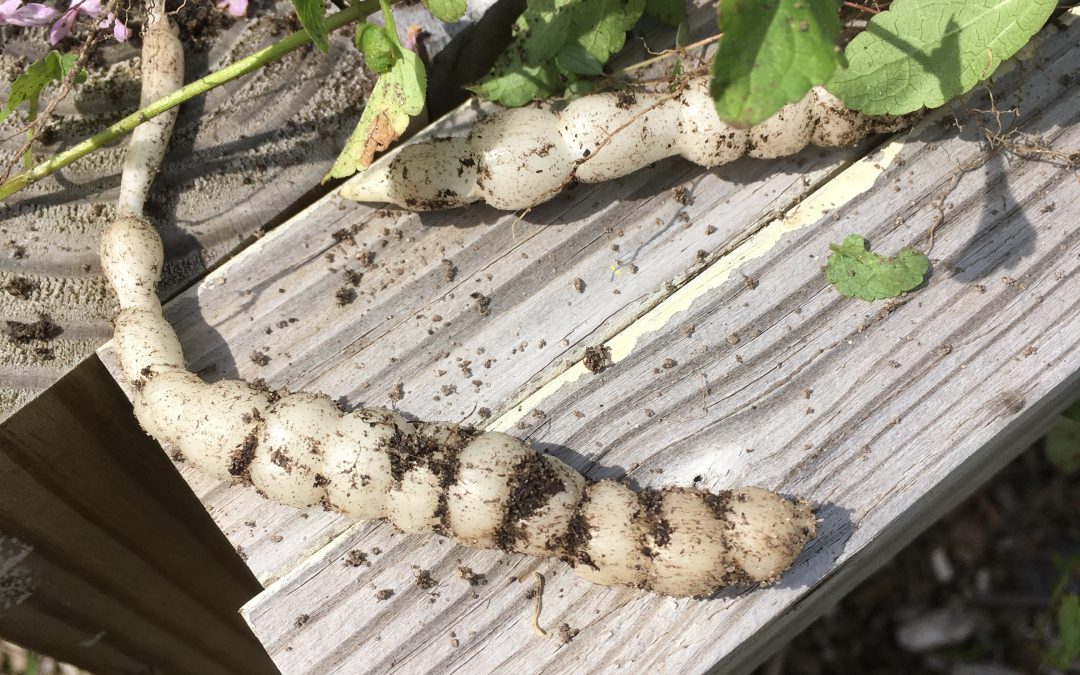
by Julie McConnell | Jun 11, 2020
Why are the plants we are trying not to grow so hard to kill? Weeds can be quite frustrating to home gardeners as they struggle to get them under control. There are a few things you can do to help make your efforts more successful.
Identify the weed. It might seem like it doesn’t matter what the plant is if you know you want to get rid of it, but a big part of your strategy should be figuring out why that plant is being so difficult. Below are the reasons why weed identification is so critical in your fight to control it.
- Which plant are you favoring with your maintenance routine? All plants have similar basic needs: water, sunlight, nutrients, and a space to grow, but some perform better with varying amounts of each of these inputs. Sometimes we can influence these factors in a way that favors one plant over another. The best example is how we irrigate our landscape. If you plant drought tolerant shrubs, such as Indian Hawthorne, which can survive with little to no irrigation after establishment, and then continue to water 2-3 times a week, is it any wonder that you get water loving weeds such as dollarweed, torpedograss, or sedge? Only apply inputs that support your desirable plants and nothing more.
- Recognize the weed type. There are three main types of weeds we typically encounter: broadleaf, grass, or sedge. Some herbicides are broad-spectrum, which means they kill any type of plant, while others are selective. Selective herbicides generally target either broadleaf, grass or sedge weeds and have minimal impact on the other types. This can be very important information to have if you are shopping for an herbicide.
- Understand the life cycle. Herbaceous plants fall into three main life cycle categories: annual, perennial, or biennial. Annuals and biennials tend to reproduce primarily from seed. The annual plant completes its entire life cycle in one season or year and a biennial takes two years. When targeting these two, your goal is to get rid of the plant before it flowers and sets seed to reduce future crops. If you miss that window and the weeds go to seed, plan to use a pre-emergent herbicide prior to their next scheduled germination date (usually the next season). Perennials live for more than 2 years and tend to be tough to manage. They may reproduce by seed but many also multiply by vegetative means. To put this simply, they store everything they need in tiny pieces of the plant and if left in place, it will generate more plants. So, that little tiny root fragment from dollar weed you didn’t pull up – yep, it’ll grow a whole new one in its place!
For more information on weeds and weed control in lawns and landscapes, contact your local UF/IFAS County Extension Office!



















